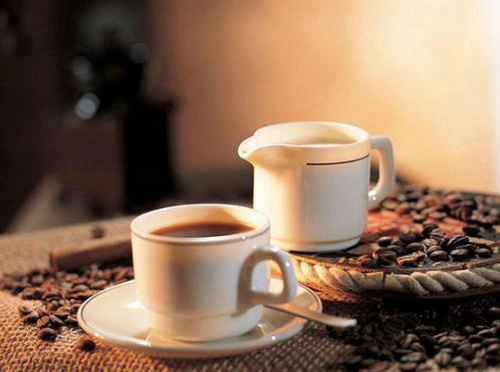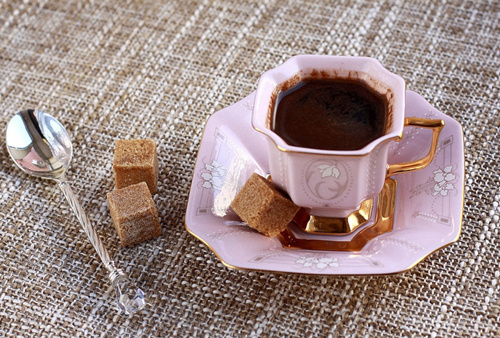Encounter ten thousand kinds of Hawaiian coffee
The coffee is full-bodied and aromatic, with attractive cinnamon spices and nutty flavors, and a well-balanced acidity, as charming as the colorful colors of the Hawaiian island and a long finish. The world-famous "Kona of Hawaii" is a mellow and sour coffee bean.
Kona coffee is grown on the slopes of Mauna Roa volcano on the southwest coast of Hawaii. In terms of flavor, Kona beans are closer to Central American coffee than Indonesian coffee. Its average quality is very high, carefully handled, medium texture, good sour taste, very rich flavor, and fresh Kona coffee is extremely fragrant. If you think your coffee is too thick, African coffee is too sour, Central and South American coffee is too rough, then "Kona" may be suitable for you. Kona is like a girl in the Hawaiian sunshine breeze, fresh and natural.
Kona coffee beans are average and neat in shape, with strong sour and sweet taste, moist and smooth taste. Because they grow on volcanoes and have high-density artificial farming, each bean can be said to be a spoiled "lady" with beautiful, plump and baby-like skin.

Although Hawaii is often affected by tornadoes, the climatic conditions are very suitable for the coffee industry. There is plenty of rain and sunshine, and there is no worry of frost. In addition, there is a strange natural phenomenon called "free shade". On most days, around 2 o'clock in the afternoon, white clouds appear in the sky, providing the necessary shade for the coffee trees. In fact, it is such superior natural conditions that make Arabica coffee in the Kona region produce more coffee than any other plantation in the world, and always maintain high quality, unique growth and climate environment to create a stronger coffee flavor.
Kona coffee is indeed a treasure in the world and is not easy to find. The real Hawaiian Kona coffee has the sweetness of caramel, which makes people enjoy the unique pleasure and leads you slowly into the detached state of tasting coffee.
Of all the coffee producers, Hawaii has the most stringent management of the coffee industry, the highest labor costs and the best level of investment.
Hawaii's coffee industry has to compete with the expanding tourism industry. Most coffee is grown on the slopes of MaunaLoa. Mauna Loa was originally a volcano located in the western part of the Kona region on the island of Hawaii. The coffee producing area is about 30 kilometers long and its growing areas are mainly concentrated in the north and south of the area. Coffee trees are planted in relatively desolate areas, but their soil is fertile and contains volcanic ash. Although it takes a lot of physical labor to start planting and it is difficult to manage, it is comforting that Kona's coffee trees (at least those growing above 90 meters above sea level) do not seem to be affected by any diseases and insect pests.

Real Kona coffee is indeed a treasure in the world and is not easy to find. The best Kona coffee is divided into three grades: ExtraFancy, Fancy and NumberOne. This third-class coffee is produced on manors and under natural conditions. Most of the coffee on the market that calls itself "Kona" contains less than 5% of the real Hawaiian Kona coffee. Another good Hawaiian coffee can be found in the United States-Hawaiian Kaj Farm Coffee (KaiFarms).
Important Notice :
前街咖啡 FrontStreet Coffee has moved to new addredd:
FrontStreet Coffee Address: 315,Donghua East Road,GuangZhou
Tel:020 38364473
- Prev

There's actually a big difference between cocoa and coffee.
Many friends think that cocoa and coffee are the same plant, but they are not. There is a big difference between cocoa and coffee.
- Next

Kopi Luwak
There is a kind of coffee that I have been famous for a long time, but I have never tasted it, or, more precisely, I have never dared to taste it. This is the famous Kopi Luwak. The fault lies in the word "cat shit". How smelly cat shit is, but the coffee merchant is named after it. Do you dare to taste it?
Related
- Beginners will see the "Coffee pull flower" guide!
- What is the difference between ice blog purified milk and ordinary milk coffee?
- Why is the Philippines the largest producer of crops in Liberia?
- For coffee extraction, should the fine powder be retained?
- How does extracted espresso fill pressed powder? How much strength does it take to press the powder?
- How to make jasmine cold extract coffee? Is the jasmine + latte good?
- Will this little toy really make the coffee taste better? How does Lily Drip affect coffee extraction?
- Will the action of slapping the filter cup also affect coffee extraction?
- What's the difference between powder-to-water ratio and powder-to-liquid ratio?
- What is the Ethiopian local species? What does it have to do with Heirloom native species?

